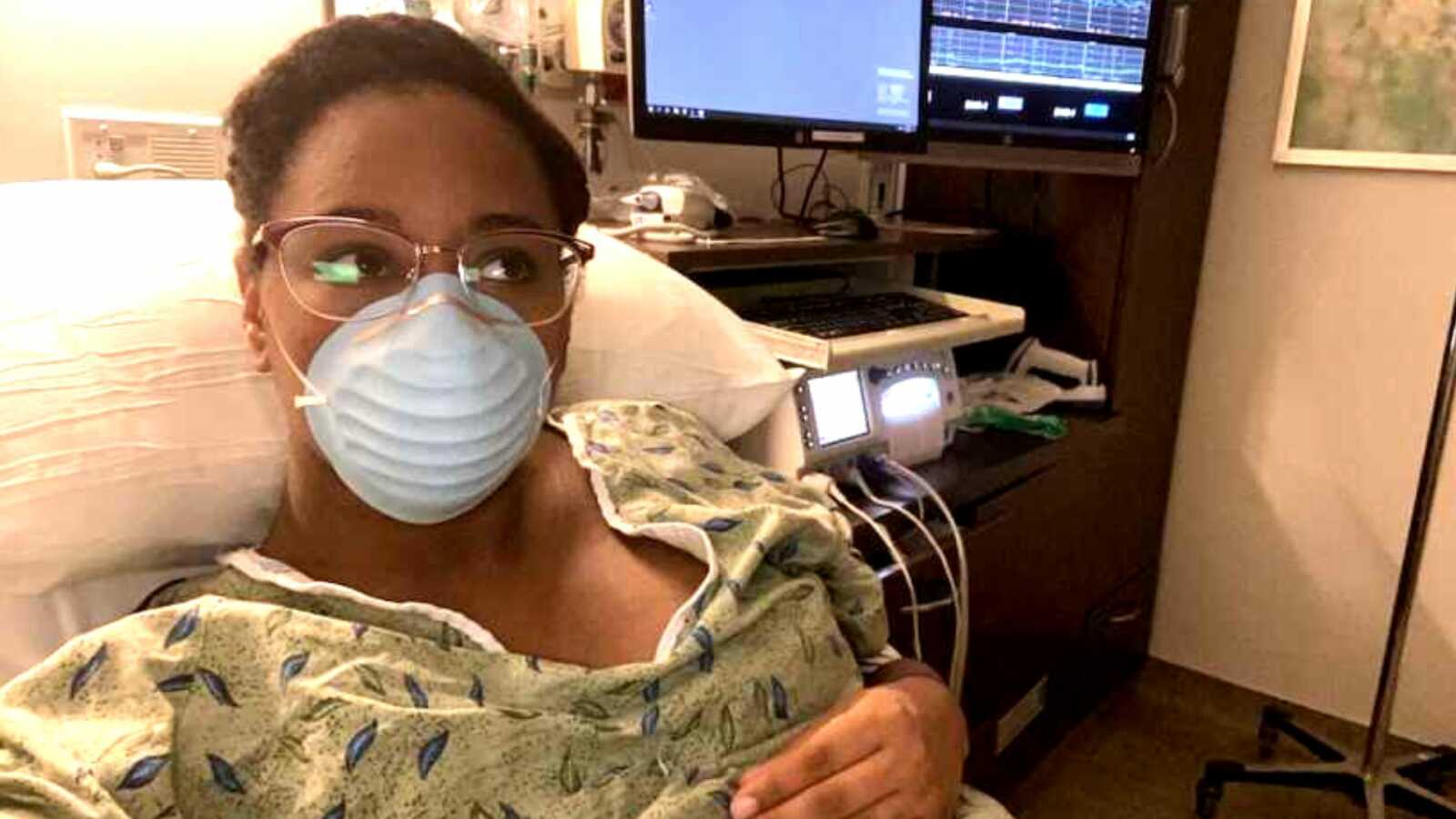Beginning Symptoms
“I have been struggling with chronic illness for almost as long as I can remember. I am diagnosed with Postural Orthostatic Tachycardia Syndrome (POTS), Ehlers Danlos Syndrome (EDS), generalized epilepsy, chronic migraines and a range of other presumed illnesses that I am currently being tested for.
When I was 2.5 years old, growing up in Canada, my adoptive parents put me in gymnastics due to my affinity for climbing, swinging, and flipping as well as my unusual flexibility. Like many with EDS, I took straight to gymnastics and did quite well. However, that did not take away from little quirks that were noted. I was almost always the gymnast who was injured, seemingly worse than what the method of injury would indicate.
I was called a clumsy kid and was constantly covered in bruises, bandages, and braces. It was an open joke that I knew all the casting people in the hospital by name. When I went to the dentist I would be in excruciating pain with any cavity repairs, saying that I didn’t think the numbing was working. From exceptionally flat feet, joints ‘cracking’ painfully frequently, and fainting with high temperatures and postural changes, in hindsight we should have noticed there was something wrong.
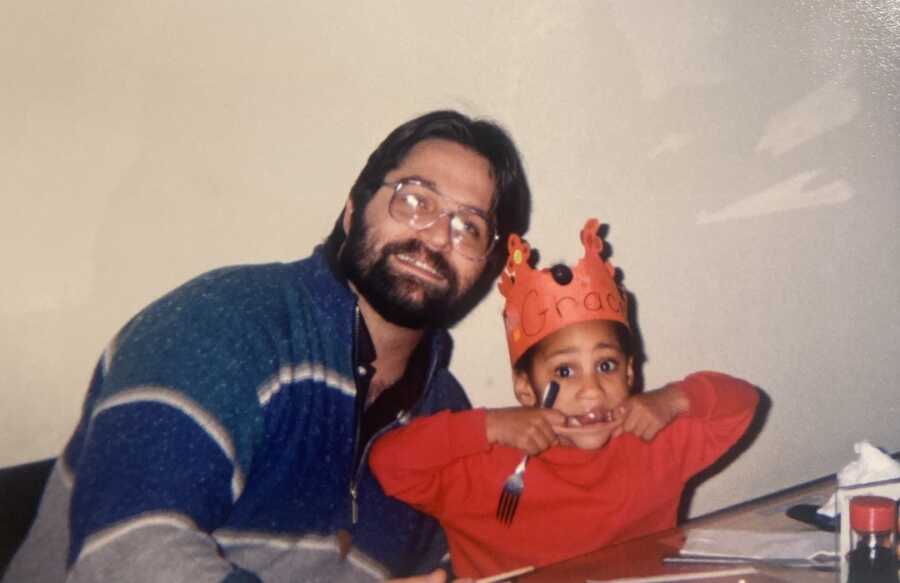
As I got older and stronger, building my muscle with athletics, I still had symptoms but they were less noticeable. Two of my biggest struggles remain staying hydrated and pain. But I always assumed this was an issue for everyone and didn’t bother to bring it up in any doctors appointments.
I began doing local theatre, film and television, including doing small stunts or getting cast in ‘quirky’ roles on stage due to my flexibility. But I would miss out on things my peers were doing because I was always in a cast or brace due to my propensity for fainting.
I finished off high school with honors in 2012 and moved to Hawaii for University. In Hawaii I took up surfing as a weekend activity but stopped because of injury and wanting to put my full focus on classes. Without the activity, I naturally began to lose some muscle tone and began to experience more injuries and pain.
First Surgery
In 2014, I had my first surgery to repair a torn labrum in my hip. The pre-surgery scans noted tears in both hips and bone spurs, which were noted to be a result of the joint capsule being to close together and rubbing. We thought that was because of the torn labrum but we now know it is because of my dislocations.
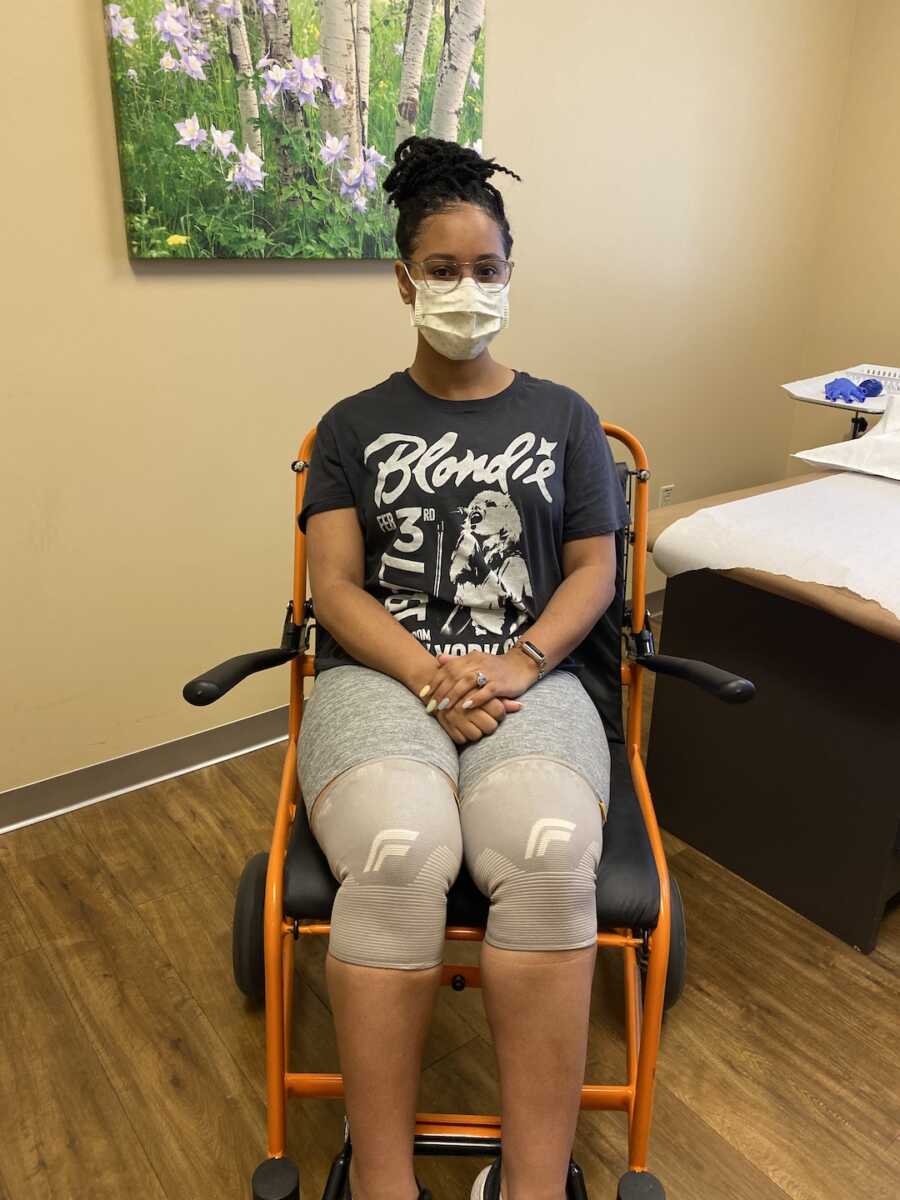
I chose to undergo surgery to repair the right hip and anchor the cartilage down so it would be less likely to happen again. The plan was for me to have the second hip done on a later date. So during spring break of 2014, my mother flew to Hawaii to care for me while I healed from hip surgery. When I went for my post surgery follow up, the orthopedic surgeon noticed I was still incredibly flexible for someone who had had this surgery. He performed what I would later learn was an impromptu Beighton test, told me I was extremely hyper mobile, and asked if I had ever heard of EDS.
Ehlers Danlos Syndrome Diagnosis
Of course, at that point I hadn’t. The surgeon referred me to a rheumatologist to check for arthritis in regards to the pain and potential EDS. Once again, in a new doctor’s office the Beighton test was performed where I scored a 9/9. I was promptly diagnosed with EDS type 3 (now known as hEADS) and sent off for scans of my heart to make sure there weren’t any signs of vEDS.
During this time I was having seizures pretty frequently. Like, multiple times a day frequently. I was sent to a neurologist who told me, ‘All girls your age have seizures. It’ll go away.’ We insisted he at least test me and he ordered a 10 min EEG and said I was fine and I should just get a service dog to alert me and go live my life.
This didn’t sound appropriate to me, but after years of being brushed off by doctors I was happy to at least have some sort of treatment option and I’d always wanted a dog. My first service dog was a tiny Manchester Terrier named Ruby who we got from a shelter in Canada due to her innate ability to notice seizures. She was not with me long because she was hit by a careless skateboarder on campus and became too scared to live in such a busy area. She lives very happily with my now retired parents on their large property.
In 2016, I got a large Goldendoodle named Snickerdoodle from a Service Dog trainer in Hawaii and she’s been with me ever since. Now retired due to arthritis, Snickerdoodle was with me in the college dorms, my first apartment, my first house, and through many moves and life changes.
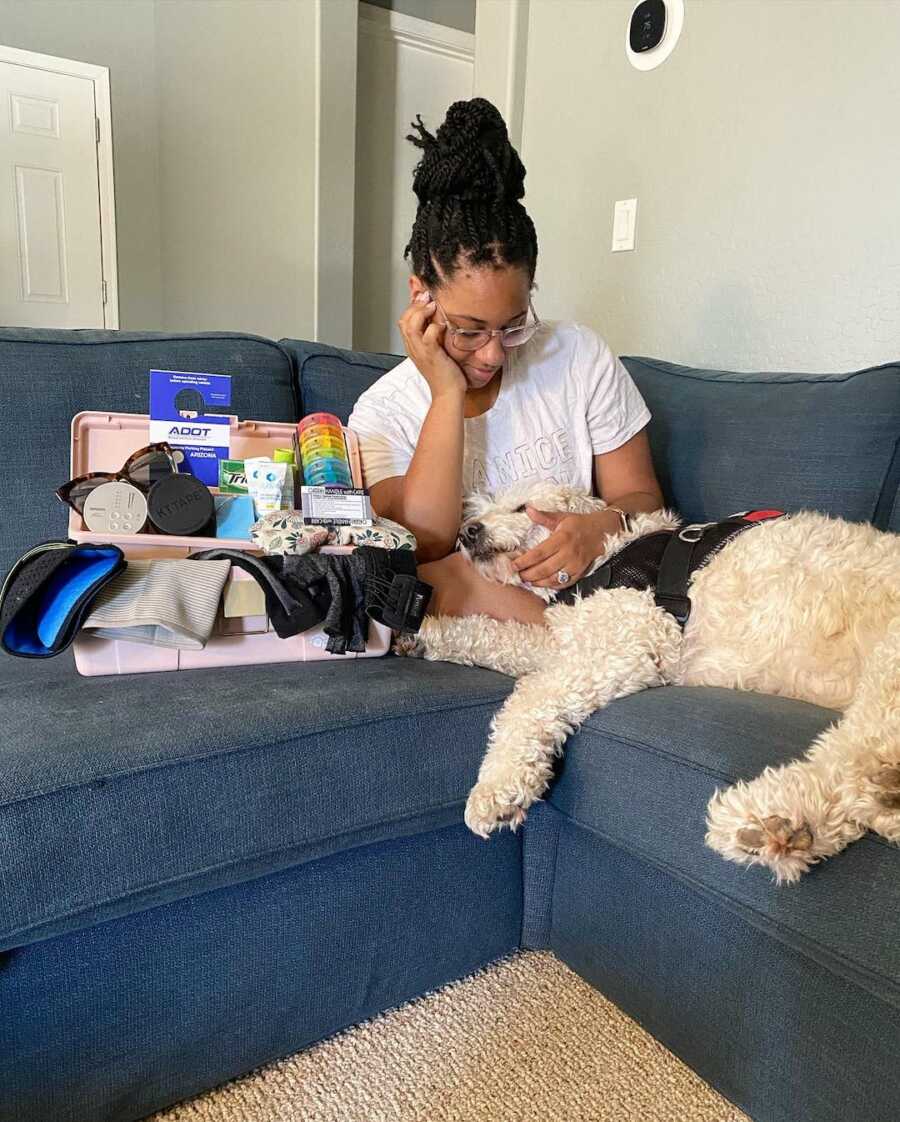
She ended up being the best thing for me in a time when a doctor refused to do more tests even something was clearly going on. She would wake me up in the night to warn me of seizures, warn me during the day, go get help, carry medicine, and even ended up being trained to perform Deep Pressure Therapy (DPT) for my consistent joint pain.
In the fall of 2016 , I took a one-year medical leave from university. I ended up not graduating until December of 2018, but I went back and did it and I am proud of that.

More recently, after getting married in 2020 (I know, I know…worst possible choice for wedding date), I qualified for better insurance through my husband’s work. I began seeing doctors at his hospital who were recommended either from the local chronic illness community or from my husband’s professional connections. One of these new doctors was my seizure neurologist. I went to her after my primary care physician heard my story of seizures and insisted I see a neurologist and make sure something else wasn’t going on.
Learning To Live With Chronic Illness
This PCP has been my lifesaver in terms of compassion, listening, and good referrals. When I went to see this new neurologist I hadn’t been having seizures for a couple years but she decided to order a 2-hour sleep deprived EEG to double check that it wasn’t just stress causing the seizures. We found out I have generalized epilepsy and I was put on medication to keep it in check while I stay at home with my toddler.
Life with EDS and epilepsy has definitely not been easy. As one can imagine, having defective connective tissues adds an additional level of worry to have fainting or seizure episodes since we never really know what can be messed up or how irreparably injured I could become. Even with all this, I feel lucky that I am not as severe as others within the community and I try to do everything I can with my good days to make them worth it.
I am still undergoing testing and receiving treatments for my conditions but overall I am in a much better place now, care wise, than I was 5+ years ago. This includes things like finally getting in with pain management and being referred to a medical orthopedic bracer for more heavy duty braces. It seems getting older has brought me to a place where I can finally stand up for myself and demand proper treatment.
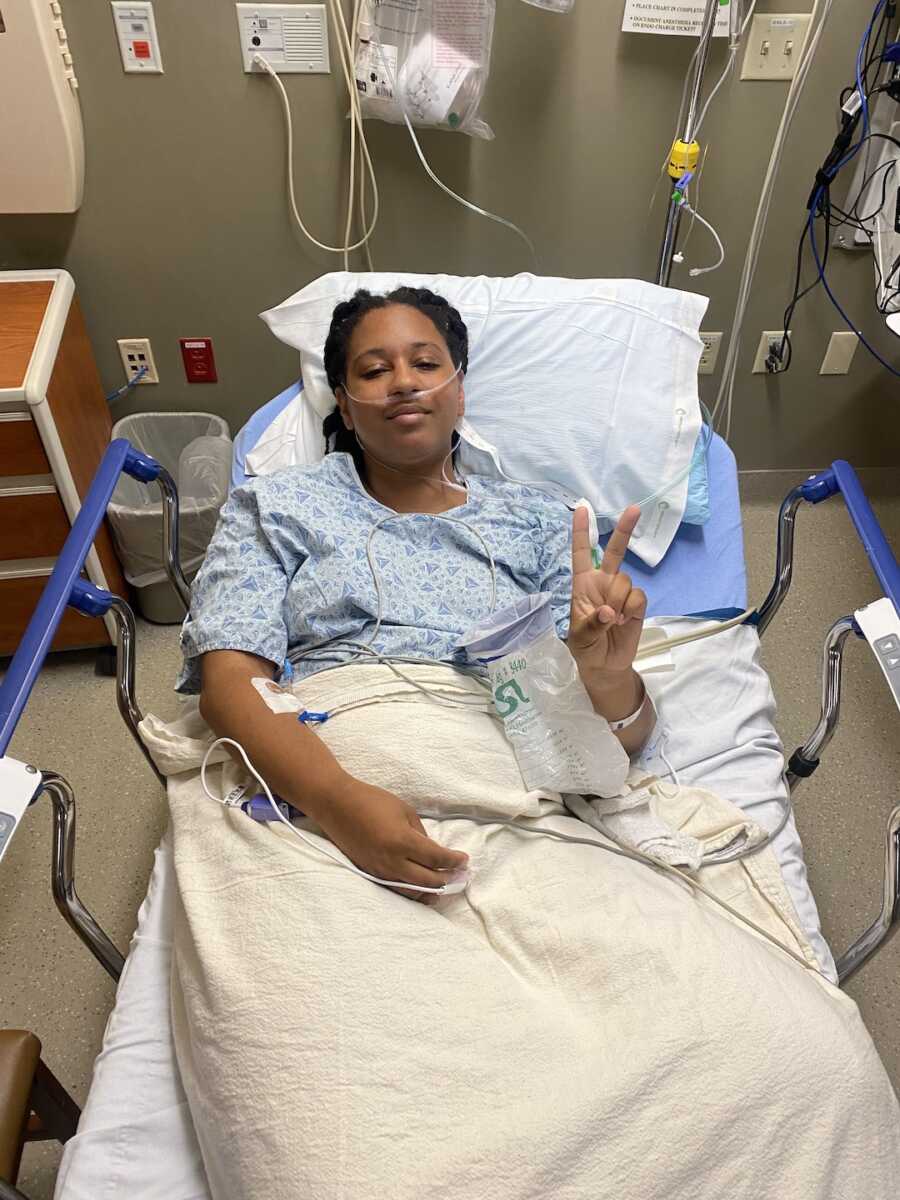
While doctors don’t always listen, I have found that insisting on tests has helped me immensely as opposed to just quieting down and accepting the words ‘all girls go through this.’
Finding Support Systems
Having a support system has been the most important part of this change in mindset; from my parents being so good with everything now that we know what was causing all those quirks, to my best friend Tavi, who also suffers from chronic illnesses. She has provided me with so much understanding and ranting space.

As women in our late 20’s we never thought we would be swapping doctor recommendations or finding new braces together, but having a friend who can relate so well to me is the best thing in the world. My husband has also always been immediately ready to drop everything and support me or glare at someone who wants to make comments about me using my disability placard to access handicap parking on bad days.
His favorite response when I say that I don’t know if I am disabled enough to use this parking, while I hobble around relocating joints, is to say, ‘If anyone questions you I’ll just fall to the ground and drag my legs behind me until they stop being rude.’ He handles me gently when I’m hurt and always find new ways to help me out.
In fact, my husband and I actually originally bonded over EDS. We met on a dating app and while asking what each of us did he began trying to explain what his job as Cardiac Sonographer was. I stopped him and excitedly told him I actually already knew what that was because I had echos done early on in my diagnosis phase to make sure my heart was okay.
He of course asked what conditions I had, as it was uncommon for him to see such a young patient with these issues. When I began to describe it, he stopped me and excitedly told me everything he knew about EDS from his studies and all his patients who have had it. Of course both of us not having to explain such big parts of our lives to yet another potential partner was major for us and now we always share this story as one of the high points of our lives. We always laugh about how EDS brought us together.

Issues In The Medical System
With chronic illness, there are so many memories I think we all can relate to. A very specific one is the immediate disbelief from new providers. While I have now found an amazing care team, I definitely have my fare share of bad ones. Recently, I was referred to a new provider whose nurse called me two days before my appointment to question the symptoms I had written down and tell me she really didn’t think this doctor would be right for me.
She said she would consult with him. When he accepted to meet with me, I went into the appointment and I was met with immediate hostility when the nurse restated its likely this doctor wouldn’t be right for me and it might not even be worth my time, but if I wanted to speak with him anyway, I could. I agreed to that and when this doctor came in, he spoke to me as if he didn’t believe I could possibly have these conditions because, as many providers were taught in school, these conditions are quite rare. We now know hEDS is likely not that rare but as far as current knowledge and actual numbers from recent studies go, it is still uncommon.
As I described my symptoms, the doctor asked if he could perform an exam and I agreed. He moved my lower limbs around to check my hyper mobility and loudly exclaimed, ‘Oh my god you’re exceptionally hypermobile!’ I told him I knew and that’s part of why I was diagnosed with this condition nearly 10 years ago. He still felt the need to continue the exam by checking my patellas because I needed new braces and he needed to see if I needed patella support.
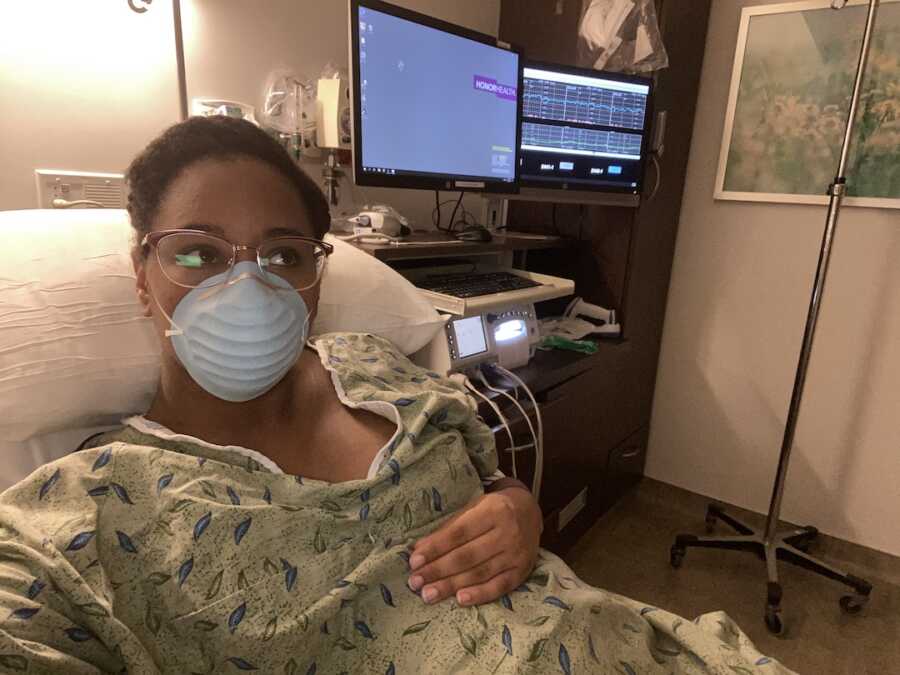
I told him my patellas did need support and I’d prefer if we didn’t check those but he insisted. He pushed my kneecaps to the side and then said ‘oops’ as he easily dislocated one. He helped me to relocate it and then quickly sat back down to write me the referrals and prescriptions I had come there for.
I don’t know why doctors and medical staff who we are supposed to be able to look to and trust can so often be dismissive of those of us with chronic illnesses. Even during one of the highest points of my life, I nearly died due to medical negligence. When I had my son in late 2020, I suffered from severe pre-eclampsia during the last week. I was induced the night before my due date and had my son 5 hours later on my birthday and his due date.
Postpartum, I began having chest pain and trouble breathing and told a nurse about this she told me it was normal to be uncomfortable postpartum, but she would bring it up to a doctor and see if they felt it necessary to do anything. The doctor came in, didn’t say anything, and discharged me. So we went home against our better judgement. At home, my breathing and chest pain got worse and worse until a few days later when my husband woke me in the middle of the night and told me it sounded like I was breathing under water and we needed to go to the ER. I tried to argue against it for fear of wasting everyone’s time but the look in his eye made me agree. When we got to the ER I was still being dismissed and as we had decided not to go to my husband’s hospital we didn’t have anyone we knew to call and come examine me.
Finally, the shift changed at 6 a. m. and a new doctor came in and ordered immediate chest x-rays and echo. It turns out that through my shortness of breath they had thought I was saying I’d had my baby 14 days earlier not 4 days. As soon as this mistake was noted everything was a rush as they realized my heart was failing and my lungs were filling with fluid. I was brought to a room and treated overnight and released, but I’ll never forgive having to miss my son’s first doctors appointment and first days home because my complaints were ignored at the time of delivery.
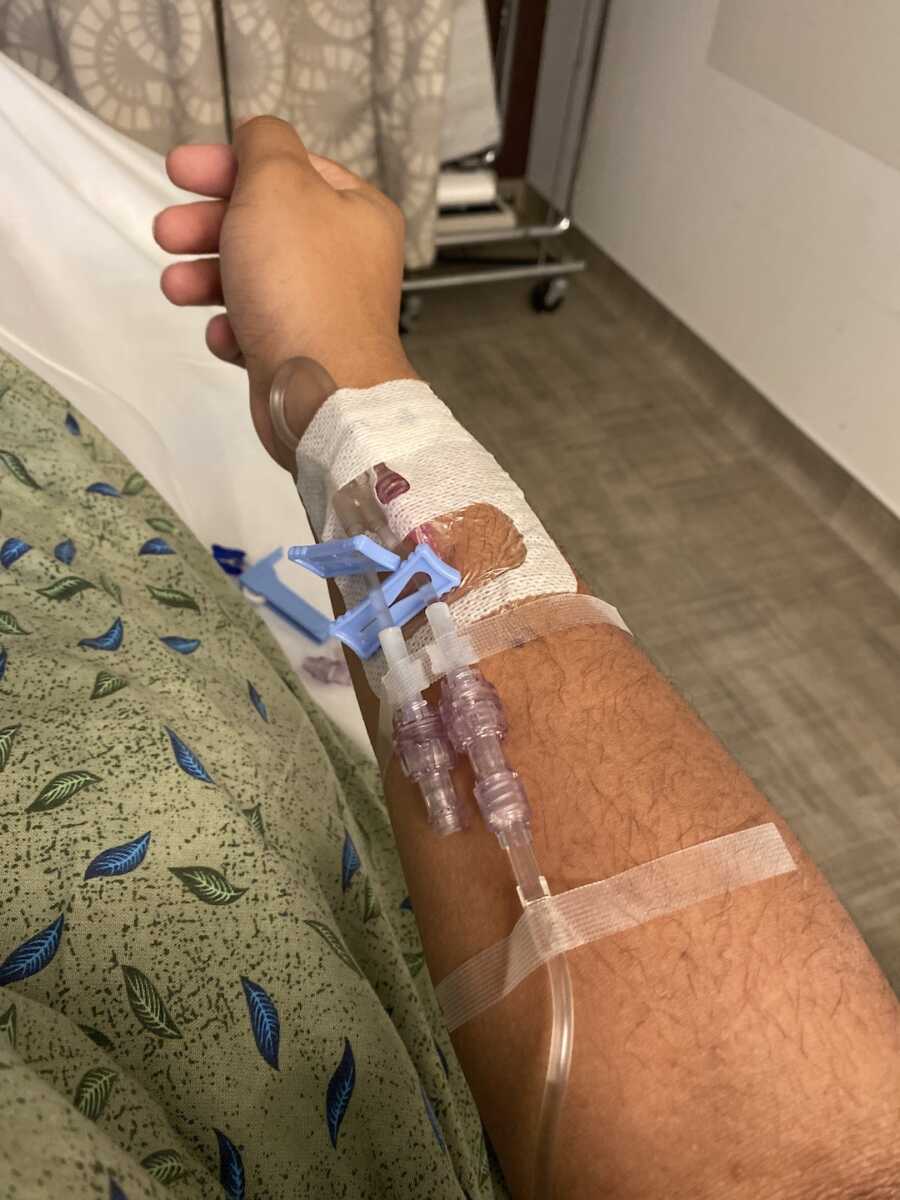
Although I had some horrifically bad experiences, I received an amazing comment and support from one of the nurses who came to me during that shift change. He sat with me while I wheezed and listened to me complain about wasting people’s time and finally stopped me and said, ‘Honey, you are right where you need to be. We will figure out what’s wrong with you and get you home, but you need to stay right here and trust that you’re in good hands.’
I don’t know why him saying that the way he did was so impactful to me, especially after hearing almost the exact same thing from my husband and parents. And I don’t even know why I chose to listen to him after so many doctors proved him wrong and brushed me off but I did. But I will never forget that nurse for saving my life.
Situations like what happened and statistics regarding maternal care for black women and chronically ill patients are exactly what drove me to create my social media pages. I felt like I was underrepresented in the chronic illness community and I wanted other black women to find me and perhaps see that some of the things they are going through are happening to others like them too, and that help is out there. I try to post general chronic illness content but I also like to mix in some content in regards to symptoms and how they present on black skin and in black patients. I hope someone finds my story helpful and I hope they know they’re right where they need to be and they can be in good hands.”

This story was submitted to Love What Matters by Grace Miller Bundy of AZ, USA. You can follow her journey on Instagram. Be sure to subscribe to our free email newsletter for our best stories.
Read more stories like this:
5 Things To NEVER Say To Someone With Chronic Illness
5 Key Tips To Help You Thrive With A Chronic Illness
Do you know someone who could benefit from this story? SHARE this story on Facebook to let others know a community of support is available.

